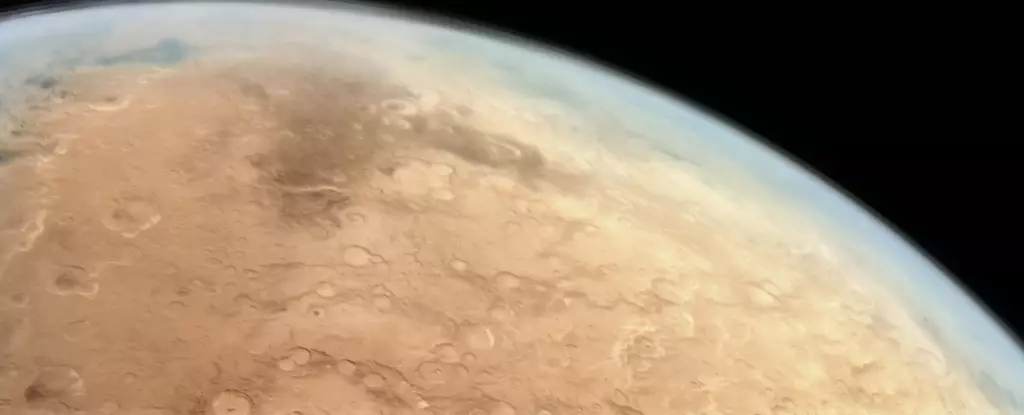Mars has long captivated humanity’s imagination, igniting dreams of discovering extraterrestrial life or even colonizing the Red Planet. Yet, despite its similarities to Earth, Mars remains a barren, desolate wasteland. The fundamental question persists: Why did this once-water-rich world fail to evolve into a thriving habitat? A recent NASA rover discovery offers insight—revealing that Mars’ fleeting episodes of habitability were insufficient to transform it into a hospitable haven. Instead, the planet was destined to become an endless desert, cursed by its inability to sustain a stable, life-supporting environment.
The core difficulty lies in Mars’ climate regulation, which starkly contrasts with Earth’s well-oiled geochemical cycle. Earth’s atmospheric stability hinges on the delicate balance of carbon dioxide cycling through volcanic activity, weathering, and carbonate formation. This cycle maintains a warm, wet climate conducive to life. Mars, however, experienced weaker volcanic outgassing, leaving it bereft of the stabilizing greenhouse gases necessary to maintain liquid water over geological timescales. When water did briefly exist, it pooled into lakes and rivers, carving the surface and providing fleeting windows for potential life. But these periods were exceptions, not the norm—ephemeral oases in a predominantly hostile environment.
Indeed, the latest research suggests that Mars endured rapid transitions from wet to dry. Massive eons of desert prevailed after brief glimmers of habitable conditions, making it exceedingly difficult for complex ecosystems, or even simple microbial life, to gain a foothold. This reality diminishes the likelihood that Mars once hosted significant life, contrasting sharply with Earth’s persistent habitability over hundreds of millions of years.
The Water That Once Was: Clues from Ancient Rivers and Lakes
The geomorphological evidence on Mars is staggering—ancient river valleys, lakebeds, and sediment deposits testify that water flowed on the planet’s surface for extended periods. NASA’s rover missions, notably Curiosity and Perseverance, have uncovered crucial mineralogical clues: carbonate-rich rocks lodged at the edges of dried-out lakes. These carbonates, akin to limestone on Earth, absorb atmospheric CO2 and preserve it within rocks. Their presence indicates that Mars once had a more complex carbon cycle, albeit a fragile one.
Edwin Kite, a leading scientist involved in interpreting these findings, emphasizes that such carbonates hint at intermittent “blips of habitability.” These were brief episodes where conditions might have supported microbial life, but they were overwhelmingly overshadowed by long durations of inhospitable dryness. The absence of sustained volcanic activity and a weak greenhouse effect meant that Mars couldn’t maintain stable, warm temperatures or persistent liquid water—key ingredients for life’s permanence.
The discovery of these carbonates not only frames Mars as a planet with a volatile environmental history but also steers future explorations toward understanding the depth and extent of these ancient water reservoirs. If pockets of liquid water still exist underground—shielded from surface radiation—then perhaps life or its building blocks could survive in hidden niches. But as of now, these remain tantalizing mysteries.
Lessons for Humanity and the Search for Extraterrestrial Life
Mars’ story is, in many ways, a cautionary tale about planetary habitability and the delicate balance required for life to flourish. The planet’s early promise was ultimately thwarted by its limited volcanic activity and inability to retain greenhouse gases, resulting in a premature plunge into sterile emptiness. This prompts significant questions about the uniqueness of Earth’s life-supporting environment and how common hospitable worlds might be in the universe.
The ongoing race between NASA, China, and other space agencies to return Martian samples reflects the desire for definitive proof. Earth-based laboratories can analyze retrieved rocks for organic compounds, microfossils, and other biosignatures that could confirm past habitability or even the presence of ancient life. Such discoveries would revolutionize our understanding of life’s universality, suggesting that the origin of life might be a natural consequence when conditions align—even if only fleetingly.
Yet, if Mars proves to have never supported even the simplest life forms, it raises profound concerns. It would imply that the emergence of life is, in fact, a rare cosmic event requiring specific and perhaps uncommon planetary circumstances. This realization could reshape our expectations about discovering life elsewhere and influence future missions, both robotic and human, by setting realistic targets.
In the end, Mars’ barren reality isn’t just an endpoint in its geological history but a vital chapter in understanding the prerequisites for life itself. Its story underscores that planetary habitability depends on a fragile interplay of geological and atmospheric processes—an interplay that, if disrupted, could doom a planet to lifelessness, regardless of initial promise. As we continue our quest to unlock the universe’s secrets, Mars remains a stark reminder of both our planet’s uniqueness and the intricate conditions that foster life in the cosmos.

